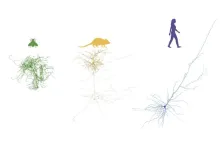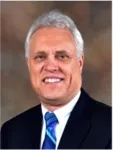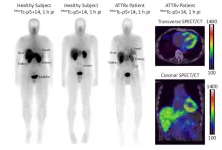(Press-News.org) CHICAGO, June 10, 2024 — The cost of nutritious food and the lack of access to it are of significant concern to U.S. consumers. That’s according to a new national poll of public attitudes on food and nutrition conducted by Zogby Analytics on behalf of Research!America and the American Heart Association. Nearly 7 in 10 (68%) respondents recognize healthy eating habits as an important factor in improving a person’s chance for a long and healthy life. Yet more than half (53%) say the United States is not making enough progress for nutritious food to be more accessible and affordable.
The polling results are included in an expert analysis of U.S. health and the future of food that outlines steep challenges to improving nutrition security, caused by systemic factors that can make it more difficult for people to access healthy food. The report, released today by Deloitte, the American Heart Association and Research!America, details the urgent challenges to creating a food system that effectively integrates nutritious food into health care for the prevention, treatment and care of cardiovascular disease and other chronic conditions.
These findings were announced at The Drake Hotel in Chicago, the birthplace exactly 100 years ago of the American Heart Association, the world’s leading public health organization focused on heart and brain health for all.
“Efforts led by the American Heart Association have cut death rates from heart disease by half in the past 100 years, but as we look to our second century of existence, the trends are ominous,” said Nancy Brown, chief executive officer of the American Heart Association. “We are committed to averting a crisis of unparalleled health and economic burdens due to cardiovascular disease and obesity in the coming decades.”
According to stark projections published June 4 in the Association’s flagship peer-reviewed journal Circulation, obesity, if left unaddressed, will be a significant driver of sharp increases in cardiovascular disease that are anticipated by 2050:
More than 6 in 10 (61%) U.S. adults are projected to have some form of cardiovascular disease by 2050 – up from about half of all adults currently.
Obesity rates will increase nearly 40% in adults. from 43.6% to 60.6%, and by more than 60% in children, from 20.6% to 33% by 2050.
The highest growth of obesity prevalence is expected to be among adults 20-44 and 45-64 years old. In children, a steep growth of obesity is projected in all age groups.
More than 150 million people (close to half of the nation’s population) will have a poor diet – the most prevalent factor affecting health conditions such as hypertension, obesity and diabetes.
Obesity is also a major factor in the public’s perceptions of health in the U.S., according to the public opinion survey. A resounding 94% of respondents believe that obesity is either a somewhat (41%) or very (53%) serious concern.
More than 3 in 4 respondents (77%) said they would like to eat a healthier diet. However, respondents reported significant barriers to achieving that, including:
The cost of healthy food (60%): Many find it challenging to afford nutritious options.
Stress eating (42%): Emotional factors play a role in dietary choices.
Lack of preparation time (33%): Busy schedules hinder meal preparation.
Lack of knowledge (32%): Understanding what foods are healthy and how to prepare them remains a challenge.
“The results show significant differences in how historically underrepresented groups rank the barriers to healthy eating,” said Mary Woolley, president and CEO of Research!America, a nonprofit medical and research advocacy alliance. “Nearly 7 in 10 Asian American (66%) and Hispanic (68%) respondents said the cost of healthy food was their biggest barrier to healthy eating. Black respondents were more likely to cite gaps in knowledge about healthy food (38%) and difficulty accessing stores that carry a selection of nutrient-dense foods (25%) as barriers to healthy eating.”
The U.S. Health and the Future of Food report implicates food and nutrition insecurity (the inability to attain adequate calories and nutrition to support health), ultra-processed foods and the lack of resilient and adaptive food and agricultural systems as major contributors to poor diets. As cited in the report, approximately 1 in 7 people in the U.S. faced food insecurity in 2022 – a total of 44 million people, including 13 million children, marking the highest rates since 2014.
“The impact of food insecurity is felt disproportionately in rural (90%) and southern (80%) U.S. counties, but food and nutrition insecurity exist across the U.S.,” said James Cascone, partner, Deloitte Sustainability, Climate & Equity strategic growth offering and the Future of Food leader for the Americas. “Factors including consumer preferences, cultural norms and unhealthy food marketing, compounded by social inequities and food and nutrition insecurity, impede access to healthy foods. The resulting decline in diet quality significantly raises the risk of chronic conditions including cardiovascular disease.”
Nearly 60% of the U.S. diet is comprised of ultra-processed foods that are high in refined grains, calories, sodium, sugar and saturated fat, and are more often selected by consumers over nutritionally healthier alternatives, according to statistics cited in the report. The report calls for stakeholders including health care professionals, food industries, policymakers and others to drive innovations that enable food systems to bolster health outcomes.
“Healthy, nutritious food not only leads to better overall health – it can be a critical tool to treat, manage and prevent chronic disease,” said Kevin Volpp, M.D., Ph.D., American Heart Association volunteer, scientific lead for the Association’s food is medicine initiative Health Care by Food™ and founding director of the Center for Health Incentives and Behavioral Economics at the University of Pennsylvania’s Perelman School of Medicine and the Wharton School. “Cross-sector collaboration and research-backed innovation in public and private sector programs are needed to stem the combined tidal wave of obesity and nutrition insecurity, threatening the health of millions of people in the U.S. now and for decades to come.”
The Association’s Health Care by Food™ initiative is investing in research, advocacy and education to integrate cost-effective food is medicine approaches into the health care system. Initial pilot studies funded by the Association are underway to help strengthen the evidence base by demonstrating the effectiveness of healthy food interventions applied within the health care system.
The Association also is driving greater understanding of the components of specific foods and their role in human health in collaboration with the Periodic Table of Food Initiative (PTFI). PTFI was established by multiple academic disciplines along with the technology, philanthropy and nonprofit sectors five years ago to better understand food biodiversity by building a unique database of the global food supply to inform dietary recommendations and agricultural practices to enhance both human and planetary health.
Brown noted that additional health and nutrition solutions are needed to prevent projected increases in cardiovascular disease incidence and cost.
“We must make bold moves to change the troubling trajectory of cardiovascular disease. That is why the American Heart Association will soon launch a novel, longitudinal direct-to-patient registry of individuals living with overweight and obesity and those prescribed treatment for weight management,” Brown said. “Building on our decades of experience in patient registries and inspired by the Framingham Heart Study, this groundbreaking registry will provide seminal research to improve understanding of the causes and treatments for obesity, and how obesity is managed by health care professionals.”
The new initiative will help set the stage for fundamentally shaping public health guidelines related to nutrition and obesity. Brown called on others to embrace these types of innovative and comprehensive approaches to improving the nation’s health.
“Collaborative efforts from public and private entities are imperative to advance health and nutrition approaches that could shape the course of public health in the next century,” Brown said. “We invite stakeholders from across the health and nutrition sectors to join us in this fight to ensure that every person has access to nutritious food that leads to better health.”
Additional Resources
Multimedia is on the right column of the release link.
Forecasting the Burden of Cardiovascular Disease and Stroke in the United States Through 2050: Prevalence of Risk Factors and Disease (June 4, 2024)
Forecasting the Economic Burden of Cardiovascular Disease and Stroke in the United States through 2050 (June 4, 2024)
U.S. Health and the Future of Food report News Conference slides (PPT) June 10, 2024
American Heart Association’s 2024 Impact Goal: Every Person Deserves the Opportunity for a Full, Healthy Life (Nov. 2021)
Dietary Guidance to Improve Cardiovascular Health (Nov. 2021)
American Heart Association Presidential Advisory on Food Is Medicine (Sept. 2023)
Follow AHA news on X @HeartNews
###
About the American Heart Association
The American Heart Association is a relentless force for a world of longer, healthier lives. We are dedicated to ensuring equitable health in all communities. Through collaboration with numerous organizations, and powered by millions of volunteers, we fund innovative research, advocate for the public’s health and share lifesaving resources. The Dallas-based organization has been a leading source of health information for a century. During 2024 - our Centennial year - we celebrate our rich 100-year history and accomplishments. As we forge ahead into our second century of bold discovery and impact our vision is to advance health and hope for everyone, everywhere. Connect with us on heart.org, Facebook, X or by calling 1-800-AHA-USA1.
END
Alarming trends call for action to define the future role of food in nation’s health
New public opinion poll and expert analysis reflect crucial need to make healthy food accessible to avert projected crisis in cardiovascular disease incidence, costs
2024-06-10
ELSE PRESS RELEASES FROM THIS DATE:
Case studies show how quasi-governmental organizations could strengthen climate adaptation governance
2024-06-10
The politicization of climate issues and the unsynchronized efforts of stakeholders are hindering the effectiveness of climate adaptation governance in the U.S. According to a new study(Link is external) published by Princeton researchers, the design characteristics of quasi-governmental organizations (QGOs) could provide insights on how to depoliticize climate information sources and foster multi-level stakeholder coordination.
Quasi-governmental organizations are entities that have a combination of public and private characteristics, utilizing both for-profit and not-for-profit ...
Brain’s structure hangs in ‘a delicate balance’
2024-06-10
When a magnet is heated up, it reaches a critical point where it loses magnetization. Called “criticality,” this point of high complexity is reached when a physical object is transitioning smoothly from one phase into the next.
Now, a new Northwestern University study has discovered that the brain’s structural features reside in the vicinity of a similar critical point — either at or close to a structural phase transition. Surprisingly, these results are consistent across brains from humans, mice and fruit flies, which suggests the finding might be universal.
Although the researchers don’t ...
Protein study could help researchers develop new antibiotics
2024-06-10
A bacterial enzyme called histidine kinase is a promising target for new classes of antibiotics. However, it has been difficult to develop drugs that target this enzyme, because it is a “hydrophobic” protein that loses its structure once removed from its normal location in the cell membrane.
Now, an MIT-led team has found a way to make the enzyme water-soluble, which could make it possible to rapidly screen potential drugs that might interfere with its functions.
The researchers created their new version ...
Two can play that game: juvenile dolphins who play together are more successful as adults
2024-06-10
Juvenile social play predicts adult reproductive success in male bottlenose dolphins, a new study has found.
Fresh findings published today in Proceedings of the National Academy of Sciences led by researchers from the University of Bristol and University of Western Australia, show that juvenile male dolphins with strong social bonds practice adult-like reproductive behaviours when playing together, and those juvenile males who spend more time practicing will father more offspring as adults. The study provides rare evidence for a link between juvenile social play and reproductive success in a wild animal.
In collaboration with international colleagues, the ...
Wire-cut forensic examinations currently too unreliable for court, new study says
2024-06-10
A research article published June 10 in the Proceedings of the National Academy of Sciences highlights the importance of careful application of high-tech forensic science to avoid wrongful convictions.
In a study with implications for an array of forensic examinations that rely on “vast databases and efficient algorithms,” researchers found the odds of a false match significantly increase when examiners make millions of comparisons in a quest to match wires found at a crime scene with the tools allegedly used to cut them.
The rate of mistaken identifications could be as high as one in 10 or more, concluded ...
SNMMI elects Jean-Luc C. Urbain, MD, Ph.D., FASNC, as President-Elect at 2024 Annual Meeting
2024-06-10
Toronto, Ontario—Jean-Luc C. Urbain, MD, PhD, FASNC, professor of Radiology/Nuclear Medicine and Medicine, has been named president-elect of the Society of Nuclear Medicine and Molecular Imaging (SNMMI). SNMMI introduced a new slate of officers during its 2024 Annual Meeting, held June 8-11 in Toronto.
“As SNMMI president-elect, I plan to focus on bringing and integrating radiopharmaceutical theranostics into the clinic to benefit as many patients as possible. This will require an emphasis ...
UNC-Chapel Hill researchers create skin-inspired sensory robots to provide medical treatment
2024-06-10
University of North Carolina at Chapel Hill scientists have created innovative soft robots equipped with electronic skins and artificial muscles, allowing them to sense their surroundings and adapt their movements in real-time, according to the paper, “Skin-Inspired, Sensory Robots for Electronic Implants,” in Nature Communications.
In their research, funded by the National Science Foundation and the National Institutes of Health, the robots are designed to mimic the way muscles and skin work together in animals, making them more effective and safer to use inside the body. The e-skin integrates various sensing materials, such as silver nanowires ...
Researchers use 3D visualization to predict, prevent hurricane damage
2024-06-10
Beginning annually on June 1, hurricane season poses a major threat to Texas coastal communities, causing both physical and financial damage to the areas they hit. This damage can be staggering; when Hurricane Harvey hit in 2017, it cost Galveston $132.73 billion in damages. Texas A&M University researchers have collaborated to understand the impacts of storm surge floods before they occur to potentially reduce the level of damage. Their study was published in “Urban Informatics.”
The researchers have implemented 3D visualization technology to identify the potential outcomes of hurricane flooding ...
Kepplinger, Vidyashankar to receive funding for conference
2024-06-10
David Kepplinger, Assistant Professor, Statistics, and Anand Vidyashankar, Professor, Statistics, are set to receive funding from the National Science Foundation for: “Conference: Building a robust community: Joint International Conference on Robust Statistics and Conference on Data Science, Statistics, and Data Science.”
Kepplinger and Vidyashankar will receive $20,993 from NSF for this award. Funding will begin in July 2024 and will end in late June 2025.
The funding will support 15–20 students and early-career researchers to participate in the joint International Conference on Robust Statistics (ICORS) and the Conference ...
Novel radiotracer produces high quality images of “Alzheimer’s disease of the heart”
2024-06-10
Toronto, Ontario—A newly developed radiotracer can generate high quality and readily interpretable images of cardiac amyloidosis, a condition referred to as the “Alzheimer’s disease of the heart.” As the first amyloid-specific and pan-amyloid binding radiotracer designed for planar and SPECT/CT imaging, 99mTc-p5+14 could play an important role in early detection and treatment of cardiac amyloidosis. This research was presented at the 2024 Society of Nuclear Medicine and Molecular Imaging Annual Meeting.
Systemic amyloidosis is an incurable disease in which abnormal amounts of ...
LAST 30 PRESS RELEASES:
The Ceramic Society of Japan’s Oxoate Ceramics Research Association launches new international book project
Heart-brain connection: international study reveals the role of the vagus nerve in keeping the heart young
Researchers identify Rb1 as a predictive biomarker for a new therapeutic strategy in some breast cancers
Survey reveals ethical gaps slowing AI adoption in pediatric surgery
Stimulant ADHD medications work differently than thought
AI overestimates how smart people are, according to HSE economists
HSE researchers create genome-wide map of quadruplexes
Scientists boost cell "powerhouses" to burn more calories
Automatic label checking: The missing step in making reliable medical AI
Low daily alcohol intake linked to 50% heightened mouth cancer risk in India
American Meteorological Society announces Rick Spinrad as 2026 President-Elect
Biomass-based carbon capture spotlighted in newly released global climate webinar recording
Illuminating invisible nano pollutants: advanced bioimaging tracks the full journey of emerging nanoscale contaminants in living systems
How does age affect recovery from spinal cord injury?
Novel AI tool offers prognosis for patients with head and neck cancer
Fathers’ microplastic exposure tied to their children’s metabolic problems
Research validates laboratory model for studying high-grade serous ovarian cancer
SIR 2026 delivers transformative breakthroughs in minimally invasive medicine to improve patient care
Stem Cell Reports most downloaded papers of 2025 highlight the breadth and impact of stem cell research
Oxford-led study estimates NHS spends around 3% of its primary and secondary care budget on the health impacts of heat and cold in England
A researcher’s long quest leads to a smart composite breakthrough
Urban wild bees act as “microbial sensors” of city health.
New study finds where you live affects recovery after a hip fracture
Forecasting the impact of fully automated vehicle adoption on US road traffic injuries
Alcohol-related hospitalizations from 2016 to 2022
Semaglutide and hospitalizations in patients with obesity and established cardiovascular disease
Researchers ‘listen in’ to embryo-mother interactions during implantation using a culture system replicating the womb lining
How changing your diet could help save the world
How to make AI truly scalable and reliable for real-time traffic assignment?
Beyond fragmented markets: A new framework for efficient and stable ride-pooling
[Press-News.org] Alarming trends call for action to define the future role of food in nation’s healthNew public opinion poll and expert analysis reflect crucial need to make healthy food accessible to avert projected crisis in cardiovascular disease incidence, costs




